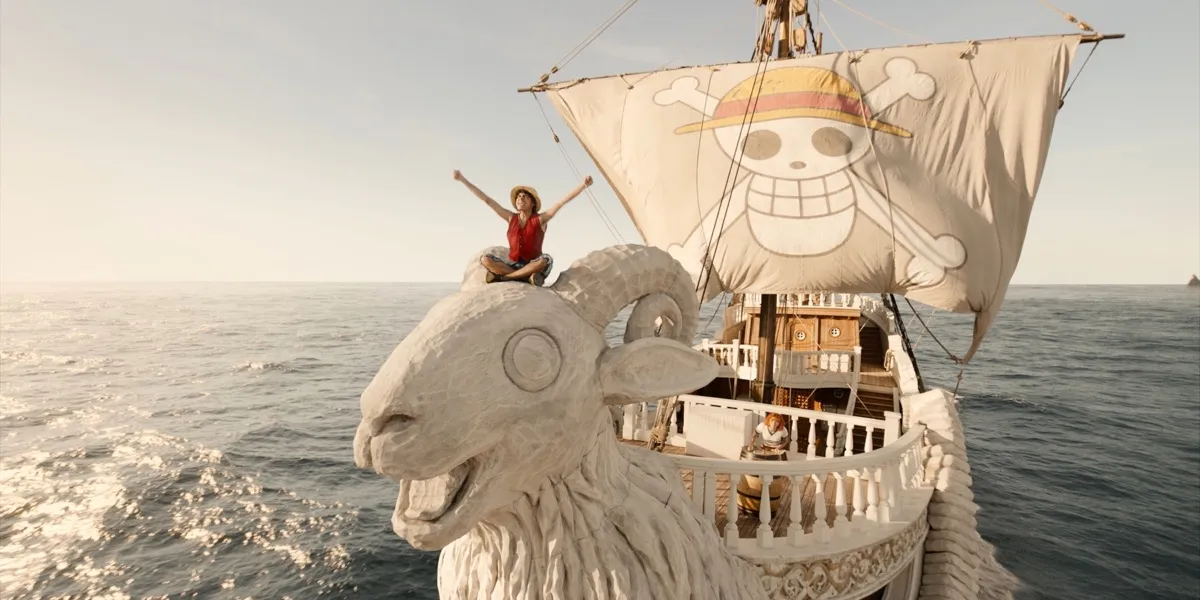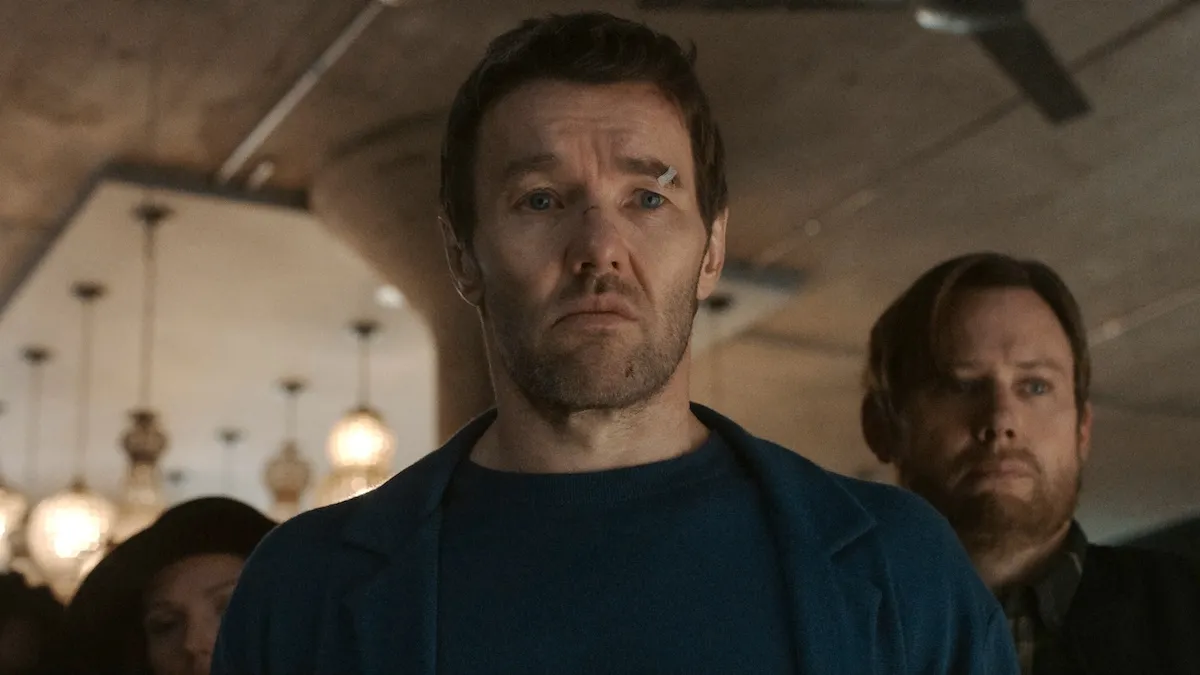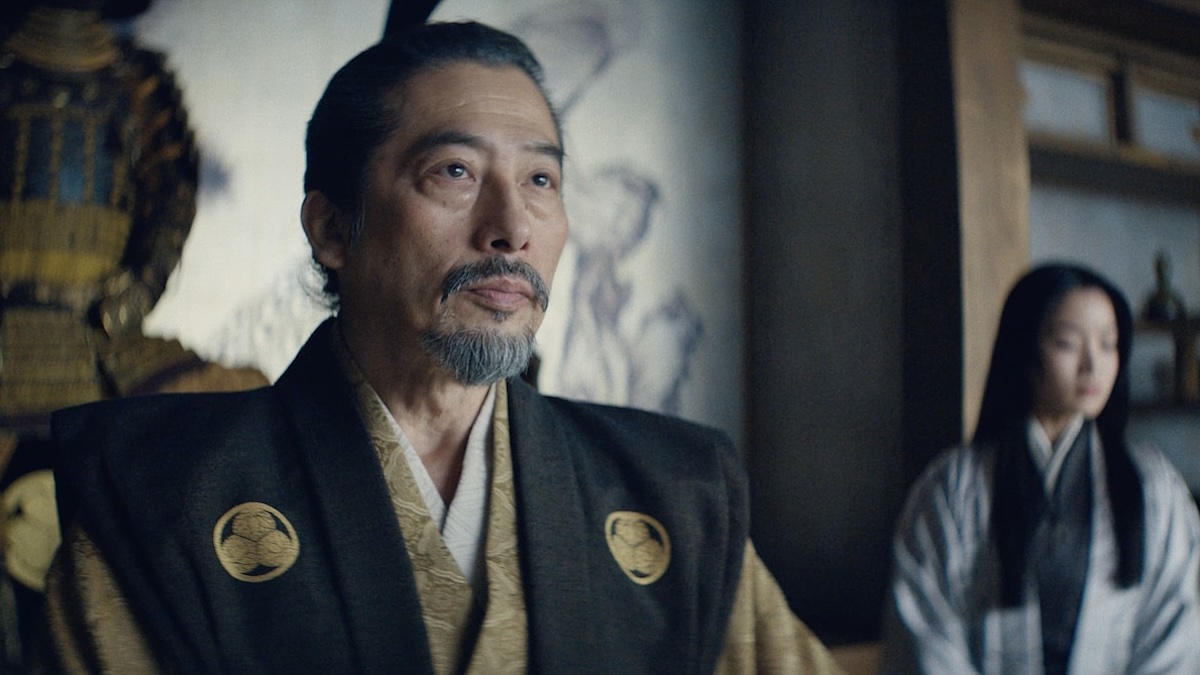Before this year, the dynamic film scoring duo of Sonya Belousova and Giona Ostinelli were primarily known for their work on The Witcher, Netflix’s adaptation of the hit video game series. Now, in many circles, they’ll be known for their work on another Netflix live-action adaption: One Piece, which broke internal Netflix records for being the most-streamed TV series on the platform in a whopping 84 countries. Simultaneously, multiple weeks in a row.
One Piece has historically had trouble catching on in the States, especially compared to the rest of the world. Even without too much help in the West, One Piece is the highest-selling comic book series of all time. But now, the Netflix adaptation is now being praised by Whoopi Goldberg on The View. It’s a surreal and exciting shift. I talked to Belousova and Ostinelli back in August—before the series premiere, before all the broken records, before the announcement of season two. Belousova and Ostinelli are friendly, approachable, and talkative—and so our conversation, which was originally slotted for fifteen minutes, spanned for forty. Here are the highlights.
Origin Story
For Belousova and Ostinelli, this moment has been a lifetime in the making. “I started playing piano when I was five, I started doing composition when I was 11,” Belousova reflected. “You know, after I started playing piano, it was a natural progression for me to go on and win every single international competition that was out there at that time.”
Ostinelli added, “I started out playing drums when I was five, piano when I was nine. I started playing in bands—you know, rock, all that.I had a more like a more pop / rock upbringing, with some classical, but not like Sonya, obviously.”
The two came together in 2014, after they had both moved to Los Angeles. Ostinelli was working on a film called Two-Bit Waltz and asked Belousova to collaborate with him on the score. At the time, Belousova was gaining notoriety for her Player Piano series, in which she arranged and performed beloved themes from Akira to Doctor Who. Once they started working together, the musical chemistry between the two composers was obvious.
“Pretty much immediately, we realized that because our backgrounds are so different … we never compete with each other, but we complement each other really, really well,” Belousova remembered. “And from there on, we kind of started our journey together.”
Making the pitch for One Piece
Belousova and Ostinelli frequently finish each other’s sentences. For example, when describing their pitch to score One Piece, Belousova began, “The deal with One Piece is we really wanted to be involved in the project, because—”
“—because we’re big fans,” Ostinelli jumped in, quick as lightning. “We love the anime, the manga, and we’re like, ‘We have to do the music.’ “
“And beyond that,” Belousova leapt in, “after The Witcher—because we love being involved in either films or TV series that require a very unique and particular elaborate world building. So we were looking for another project where we could do exactly that.”
Ostinelli said One Piece was “everywhere” during his childhood in southern Switzerland and Italy. “It [was] either watch Dragon Ball or One Piece,” he recounted.
Belousova and Ostinelli learned about the project in December 2021 and decided to make their case with a three minute video. “In that video, we literally outlined the whole concept of what we will do for the One Piece live action universe,” Belousova said, “and how we will build that music universe, all the various themes [and instruments] that we would assign to different characters … And we played all these different instruments. And at the end of the video, all these instruments got summarized within [the main] theme, and that’s where we played the theme.” If you’re familiar with the breakneck pace of Belousova and Ostinelli’s videos, you can maybe imagine how packing all this information into three minutes might be possible.
She continued, “So now, two years later, the project is done, the soundtrack is about to come out. And what’s so funny about that is literally that same concept that we’ve outlined in that quick three minute video—all the instruments that we showcased and the themes that we came up with—that is exactly what you’re going to hear on the soundtrack.”
Of Fishmen and flutes
As for what those instruments are—in regards to the Straw Hats and many of the series villains, my conversation with Belousova and Ostinelli went very similarly to their conversation with Polygon. However, our conversation got into some additional villains, like Arlong. “He’s so big and so badass,” Belousova gushed, “So he really needed that big and badass sound … So we have these really cool beats and grooves to accompany Arlong’s screen presence.”
I asked where the idea came from to give Arlong’s music a “hip hop background.” “I wouldn’t necessarily call it a ‘hip hop background,’ ” Belousova said, her voice intoning upwards. “But that’s sort of something that organically happened.”
“It was a conversation that we were having with with Matt [Owens] and Steve [Maeda, the showrunners] and Netflix,” Ostinelli added. “And everybody was like, ‘Well, we need to do different sound for Arlong.’ “
“Well, we needed to really capture that coolness that he has about his character. And we worked on different versions of his sound. We ended … [bringing] in Wonder Girl Who, is a fantastic Canadian beat maker and producer, and collaborated with her on creating some really cool beats and grooves for Arlong’s sound.”
I was additionally curious to know, however, why duo chose to illustrate one of Zoro’s swords with the Indian / Nepalese bansuri flute instead of the Japanese shakuhachi. Belousova and Ostinelli knew I was asking because One Piece mangaka Eiichiro Oda has said Zoro’s real-world nationality would be Japanese. Is this a very niche question aimed at the intersection of One Piece super fans and worldly musicians? Absolutely. You get it here, folks.
“Shakuhachi is not that long. It’s actually short as a flute,” Ostinelli explained. “We have both here in the studio. And for whatever reason, I immediately gravitated to bansuri. Because … it does look like a sword … [and] it’s a wonderful melodic instrument. But you can also do very percussive, sharp sounds.”
Belousova jumped in. “And I think if we get a little more technical here, [with] shakuhachi, the way you blow into the instrument, there is much more of an air loss happening between when you blow into the instrument and when you get the sound. So the sound itself doesn’t have as much power versus when you play bansuri … And for Zoro, we needed that power … And we’re building this world, right? We’re not tied to a very specific geography.”
The difference between anime and live action
There are significant differences between One Piece the live action series and One Piece the anime (not to mention between those two and the original source material, the manga). One of those differences is obviously the tone of the scores themselves. Kohei Tanaka and Shirō Hamaguchi’s score for the One Piece anime is light on its feet, with an ever-growing oeuvre of songs which pop up throughout the show’s 23-year history.
Ostinelli and Belousova’s score for Netflix’s adaptation goes for the epic Hollywood approach, both in terms of recruiting full orchestras and in how the music itself interacts with and often mickey mouses the series’ action. Gambling with a new sonic identity marks a wildly different approach than Tomorrow Studios took for their much-panned Cowboy Bebop adaptation, whose weaknesses where all the more apparent because they recruited Yoko Kanno, the original composer, for the (stellar) score. By contrast, the anime score (in “Bink’s Sake” and iconic opening theme “We Are”) is only referenced in One Piece a handful of times.
Apparently, the idea that the live action One Piece have a distinct musical identity was at the behest of Eiichiro Oda himself. Ostinelli recounted, “I remember when discussing with Matt and Steve and Netflix, they were saying that it was very imperative for Oda and for everybody that the score wouldn’t have that, you know, anime type of direction, and would be more grandiose and more epic.”
“That was one of the very first conversations that we had was the team,” Belousova added, “because Oda wanted to make sure that the score is as epic and as large scale as it can possibly get.”
“The initial versions [of ‘We Are’ and ‘Bink’s Sake’] that we did were more in a Japanese anime style, I think,” Ostinelli said.
“And they all got rejected,” Belousova interjected.
“Because they didn’t feel organic,” Ostinelli added.
Belousova continued, “We cannot forget is that anime is fantastic, but it’s a completely different medium with its own rules and its own playbook … This particular project has always been approached as basically one giant blockbuster. We never worked on it episodically, because all the episodes were being worked on at the same time.” The need for an anime-style song insert was apparent, though—which is why the duo zeroed in on Nami’s emotional plight for “My Sails Are Set.”
Belousova and Ostinelli are genuine music nerds at heart, excited to talk about their processes and methods. Who knows what season two will bring to our shores.
(featured image: Netflix)









